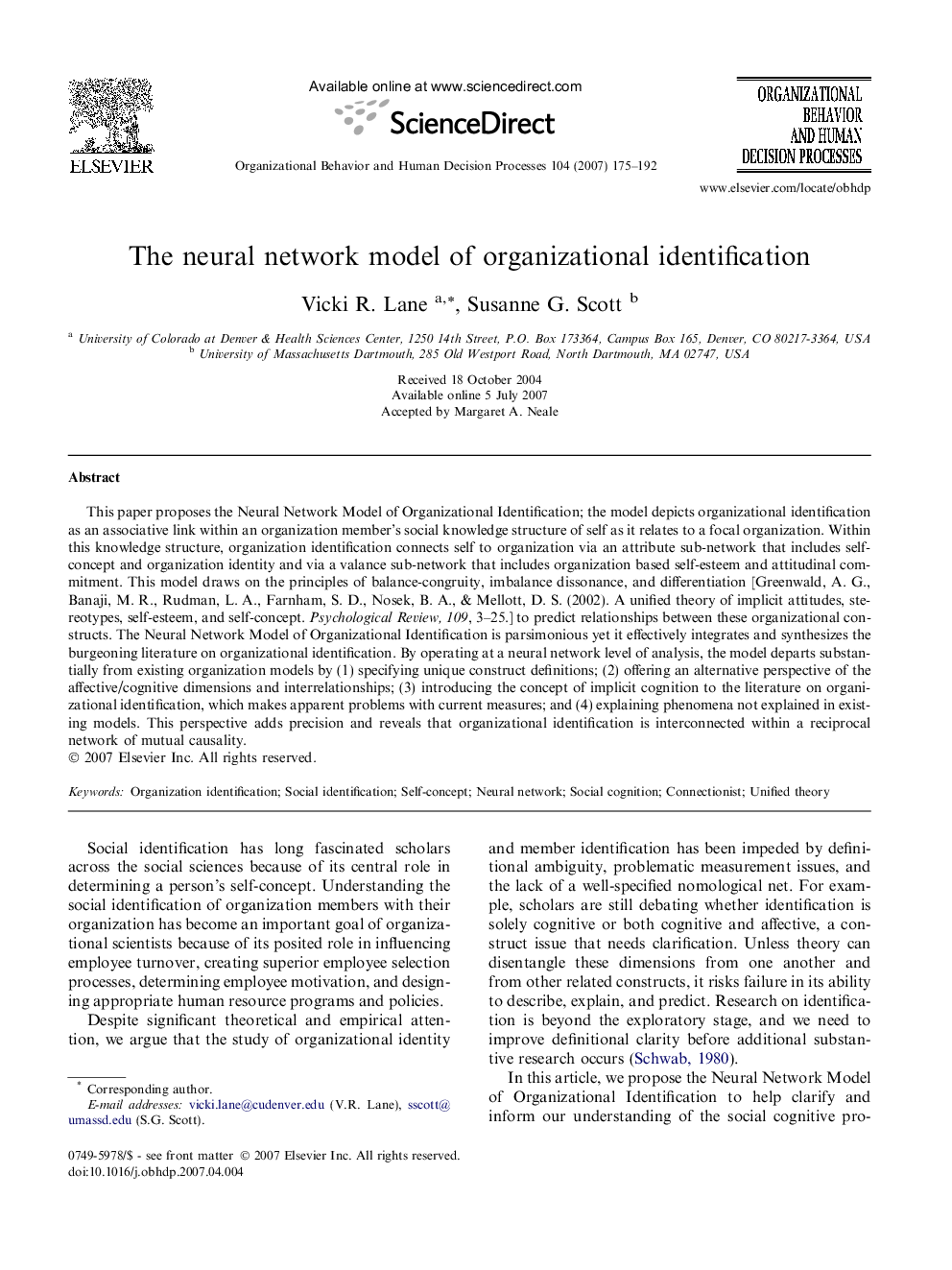| کد مقاله | کد نشریه | سال انتشار | مقاله انگلیسی | نسخه تمام متن |
|---|---|---|---|---|
| 889034 | 913595 | 2007 | 18 صفحه PDF | دانلود رایگان |

This paper proposes the Neural Network Model of Organizational Identification; the model depicts organizational identification as an associative link within an organization member’s social knowledge structure of self as it relates to a focal organization. Within this knowledge structure, organization identification connects self to organization via an attribute sub-network that includes self-concept and organization identity and via a valance sub-network that includes organization based self-esteem and attitudinal commitment. This model draws on the principles of balance-congruity, imbalance dissonance, and differentiation [Greenwald, A. G., Banaji, M. R., Rudman, L. A., Farnham, S. D., Nosek, B. A., & Mellott, D. S. (2002). A unified theory of implicit attitudes, stereotypes, self-esteem, and self-concept. Psychological Review, 109, 3–25.] to predict relationships between these organizational constructs. The Neural Network Model of Organizational Identification is parsimonious yet it effectively integrates and synthesizes the burgeoning literature on organizational identification. By operating at a neural network level of analysis, the model departs substantially from existing organization models by (1) specifying unique construct definitions; (2) offering an alternative perspective of the affective/cognitive dimensions and interrelationships; (3) introducing the concept of implicit cognition to the literature on organizational identification, which makes apparent problems with current measures; and (4) explaining phenomena not explained in existing models. This perspective adds precision and reveals that organizational identification is interconnected within a reciprocal network of mutual causality.
Journal: Organizational Behavior and Human Decision Processes - Volume 104, Issue 2, November 2007, Pages 175–192